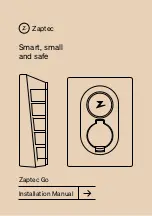
2. Remove the remaining eight bolts.
3. Gently remove the end cap from the vehicle and
store it where it will not get damaged.
4. Repeat this procedure on the other side.
The Basics Of Off-Road Driving
You will encounter many types of terrain driving off-
road. You should be familiar with the terrain and area
before proceeding. There are many types of surface
conditions: hard-packed dirt, gravel, rocks, grass, sand,
mud, snow and ice. Every surface has a different effect
on your vehicle's steering, handling and traction. Con-
trolling your vehicle is one of the keys to successful off-
road driving, so always keep a firm grip on the steering
wheel and maintain a good driving posture. Avoid sud-
den accelerations, turns or braking. In most cases,
there are no road signs, posted speed limits or signal
lights. Therefore, you will need to use your own good
judgment on what is safe and what is not. When on a
trail, you should always be looking ahead for surface
obstacles and changes in terrain. The key is to plan
your future driving route while remembering what you
are currently driving over.
NOTE:
It is recommended that the Stop/Start system and the
Forward Collision Warning (FCW) system (if equipped)
be disabled during off-road use.
WARNING!
•
Always wear your seat belt and firmly tie down
cargo. Unsecured cargo can become projectiles in
an off-road situation.
(Continued)
WARNING!
•
A malfunctioning catalytic converter can reach
higher temperatures than in normal operating con-
ditions. This can cause a fire if you drive slowly or
park over flammable substances such as dry
plants, wood, cardboard, etc. This could result in
death or serious injury to the driver, occupants or
others.
When To Use 4L Range
When off-road driving, shift into 4L for additional trac-
tion and control on slippery or difficult terrain, ascend-
ing or descending steep hills, and to increase low speed
pulling power. This range should be limited to extreme
situations such as deep snow, mud, steep inclines, or
sand where additional low speed pulling power is
needed. Vehicle speeds in excess of 25 mph (40 km/h)
should be avoided when in 4L.
CAUTION!
Do not use 4L when operating the vehicle on dry
pavement. Driveline hardware damage can result.
Simultaneous Brake And Throttle
Operation
Many off-road driving conditions require the simultane-
ous use of the brake and throttle (two-footed driving).
When climbing rocks, logs, or other stepped objects,
using light brake pressure with light throttle will keep
the vehicle from jerking or lurching. This technique is
also used when you need to stop and restart a vehicle
on a steep incline.
Driving In Snow, Mud And Sand
SNOW
In heavy snow or for additional control and traction at
slower speeds, shift the transmission into a low gear
and the transfer case into 4L if necessary. Do not shift
to a lower gear than necessary to maintain headway.
Over-revving the engine can spin the wheels and trac-
tion will be lost. If you start to slow to a stop, try turning
your steering wheel no more than a 1/4 turn quickly
back and forth, while still applying throttle. This will
allow the tires to get fresh traction and help maintain
your momentum.
CAUTION!
On icy or slippery roads, do not downshift at high
engine RPM or vehicle speeds, because engine brak-
ing may cause skidding and loss of control.
MUD
Deep mud creates a great deal of suction around the
tires and is very difficult to get through. You should use
DRIVE, with the transfer case in the 4L position to main-
tain your momentum. If you start to slow to a stop, try
turning your steering wheel no more than a 1/4 turn
quickly back and forth for additional traction. Mud
holes pose an increased threat of vehicle damage and
getting stuck. They are normally full of debris from pre-
vious vehicles getting stuck. As a good practice before
entering any mud hole, get out and determine how
deep it is, if there are any hidden obstacles and if the
vehicle can be safely recovered if stuck.
196
STARTING AND OPERATING
5538906_24_JL_OM_EN_USC_t_E1.pdf 196
5/22/2023 9:02:25 AM
















































